Are you looking for an easy way to learn how to massage tight muscles? If so, you have come to the right place. In this article, we will provide you with an easy step-by-step guide on how to massage tight muscles. We will provide you with tips and techniques on how to target key areas, as well as how to use different types of massage oils for a more effective massage. So, if you are ready to learn how to massage tight muscles, then read on!
Contents
Types of Massage
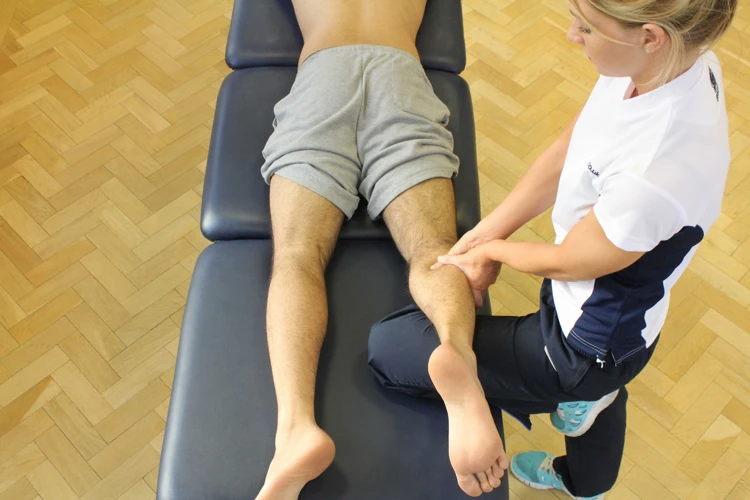
Swedish Massage
Swedish massage is a light to medium pressure massage that uses long strokes, kneading, and percussion-like tapping to relax muscles and increase circulation. This type of massage helps to reduce tension and can be beneficial for those with tight muscles.
Deep Tissue Massage
Deep tissue massage is a type of massage therapy that focuses on realigning deeper layers of muscles and connective tissue. It is especially helpful for chronically tense and contracted areas such as stiff necks, low back tightness, and sore shoulders. This type of massage is used to break up scar tissue, decrease muscle tension, and helps to increase flexibility and range of motion. It can also be effective in relieving chronic pain and reducing inflammation caused by tight muscles.
Both Swedish and deep tissue massage can be used to help loosen tight muscles. By applying pressure and/or manipulating the muscle fibers, massage can help to increase blood circulation and reduce pain and tension. This can help to improve range of motion and relaxation of the affected muscles.
Benefits of Massage
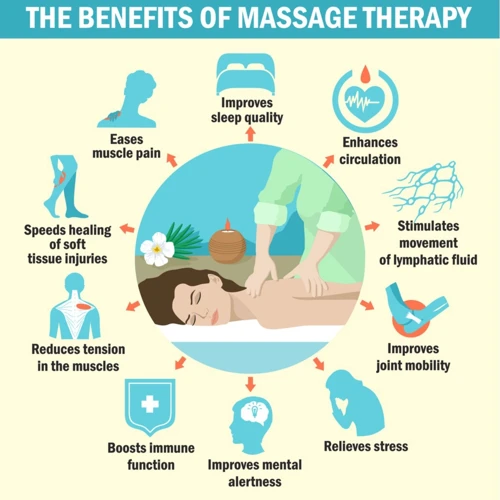
- Stimulates the lymphatic system, improving the body’s ability to remove waste, toxins and other debris.
- Increases the circulation of blood and lymph, reducing the time needed for injury healing and helping to reduce swelling.
- Improves posture and helps to reduce pain and tension in the muscles.
- Helps to break down adhesions in the muscles, allowing them to relax more quickly.
- Reduces stress and anxiety, and can help to improve sleep.
- Increases the production of endorphins, which helps to reduce pain and enhance relaxation.
- Improves flexibility and range of motion.
- Helps to reduce headaches and can improve the performance of athletes.
How Does Massage Loosen Tight Muscles?
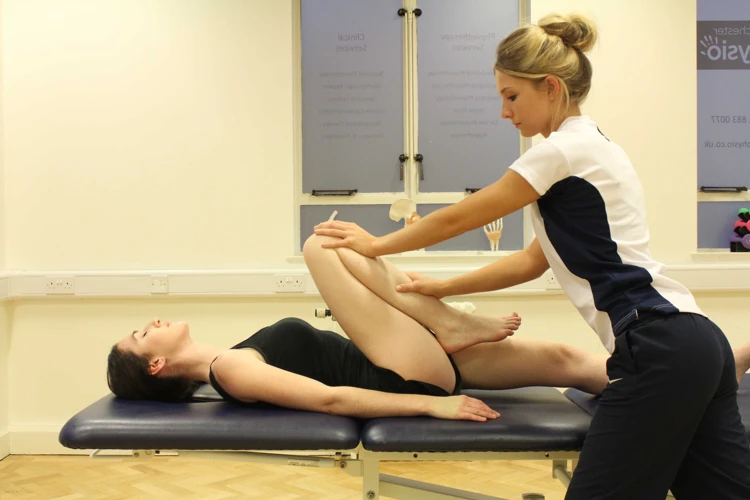
Massage can help to loosen tight muscles by increasing blood flow to the area, which helps to bring oxygen and nutrients to the muscle tissue. The massage therapist’s hands can create pressure points that stretch and relax the muscle, allowing it to become more flexible and less tight. Massage also increases the production of endorphins, which can help to reduce pain and stress. Massage can also help to improve posture by lengthening and lengthening the tight muscles. Here are some of the ways massage can help loosen tight muscles:
- Stretching: Massage therapists use special techniques to stretch the muscles, which helps to loosen them and improve range of motion.
- Manual Release: Massage therapists use their hands to apply pressure to specific points in the muscle, which helps to release the tension.
- Trigger Point Therapy: This technique helps to release tight muscles by applying pressure to specific points in the muscle.
- Deep Tissue Massage: This type of massage applies deep pressure to the muscle tissue, which helps to release tension and reduce pain.
By loosening tight muscles with massage, you can improve your range of motion, reduce pain, and improve posture. Massage can also help to reduce stress and improve overall wellbeing. If you are experiencing tight muscles, massage can be an effective way to relax and loosen them.
Preparation for Massage
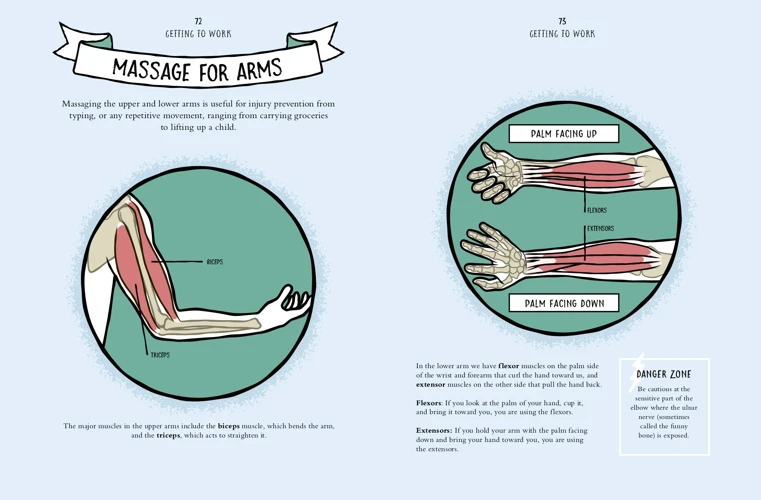
- Create a Relaxing Environment: Find a quiet and comfortable space to massage your partner. Dim the lights, light a candle and play calming music, or use an aromatherapy diffuser with calming essential oils.
- Gather Supplies: Get a massage table or a comfortable, flat surface to perform the massage. You can also use towels, blankets, and pillows for extra comfort and positioning. Make sure you have a massage oil or lotion.
- Set the Mood: Before the massage, talk to your partner and establish boundaries. Ask them about their current health and any areas that may cause discomfort. This will help set the mood and create a relaxing atmosphere.
- Temperature: Make sure the room is warm enough for the massage. If the room is too cold, your partner may feel uncomfortable and tense, which can make it difficult to relax.
- Undress: Ask your partner to undress to their comfort level. If they are uncomfortable, you can use a towel to cover them. Make sure to only uncover the area that you are massaging.
Step-by-Step Guide
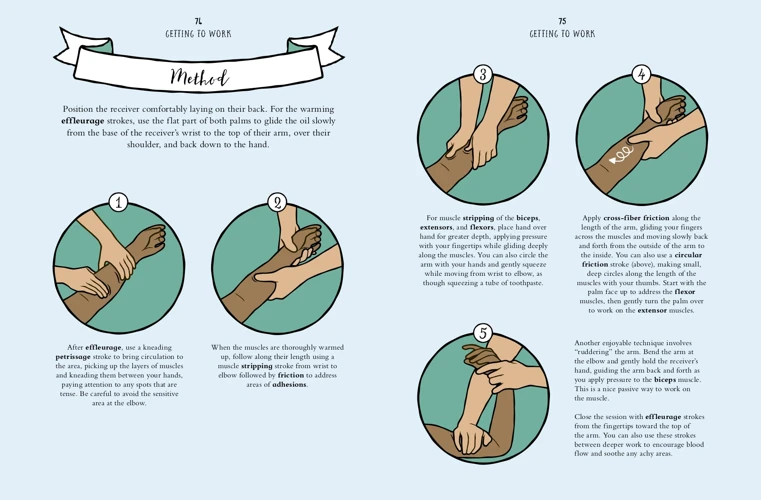
Warm-up
Before beginning the massage, warm up the muscles with light physical activity for 5-10 minutes. This can be anything from walking to jogging, biking, or stretching. This will help to relax the muscles and increase blood circulation in the area.
Massage Technique
Friction: Apply pressure using your thumbs or fingertips and move in a circular motion over the area. This can help to release tension in the muscles and reduce pain.
Petrissage: Use your hands to knead the muscles in a rhythmic motion, applying pressure to the area. This can help to improve circulation and reduce tightness.
Trigger Point Release: Use your fingers or thumbs to apply pressure to “trigger points” in the muscle. These are localized areas of tension that can be released with massage.
Cool-down
Once the massage is complete, perform a cool-down activity such as stretching or walking to help the muscles relax. This will also help to reduce soreness and improve circulation.
Common Mistakes to Avoid
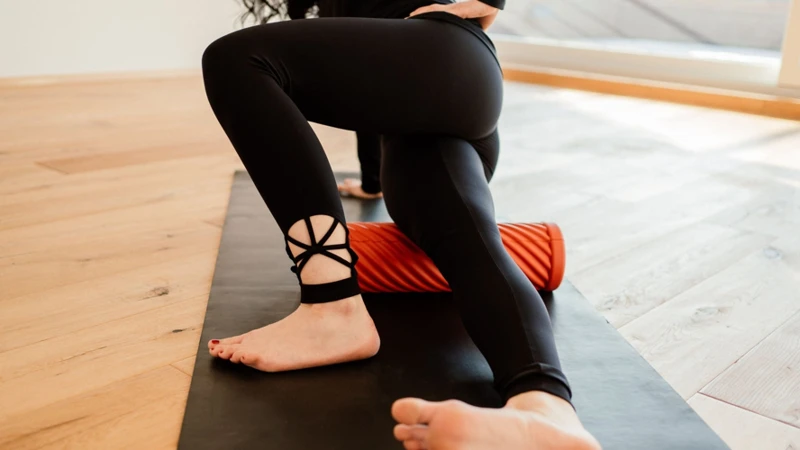
Applying Too Much Pressure: It can be tempting to press too hard into the muscle if it feels like the massage is not doing anything. However, over-pressuring can cause pain and further tense the muscle.
Failing to Use Oils: When massaging any area of the body, it is important to use lubricants such as oils, lotions, or gels to reduce friction and make the massage more pleasant.
Focusing on One Area Too Long: It is important to move around the body and focus on different areas. Massaging one area for too long can cause pain and discomfort.
Ignoring the Person’s Comfort Level: Everyone’s body is different and responds differently to massage. It is important to check in with the person receiving the massage to ensure they are comfortable with the pressure and the length of the massage.
Safety Considerations
Before massaging tight muscles, it is important to keep safety in mind. Make sure to massage only the areas that have been approved by your healthcare provider. Additionally, do not massage any areas that are injured, bruised, or inflamed. To avoid any further discomfort, start off gently and gradually increase pressure and intensity as needed. Before applying pressure, make sure the recipient is comfortable and relaxed. Stop immediately if the recipient experiences any pain or discomfort. If the recipient becomes faint or nauseous, stop the massage and seek medical help.
Frequently Asked Questions
What type of massage is best for tight muscles?
1. Trigger Point Massage: Trigger point massage is a type of massage that targets the specific knots and tight muscles in the body. It helps to reduce tension and improve mobility. It can be used to treat shoulder, neck and lower back pain.
2. Swedish Massage: Swedish massage is a gentle, relaxing massage that uses long, flowing strokes. It helps to increase blood circulation and reduce tension, making it a great choice for tight muscles.
3. Deep Tissue Massage: Deep tissue massage is a type of massage that targets the deeper layers of muscles and connective tissue. It helps to release tension and improve range of motion. It is especially effective for athletes and those with chronic pain.
4. Myofascial Release: Myofascial release is a type of massage that targets the connective tissue surrounding the muscles. It helps to reduce pain and improve range of motion. It is a great choice for athletes and those with chronic pain.
5. Shiatsu: Shiatsu is a type of massage that uses rhythmic pressure and stretching. It helps to reduce tension and improve circulation. It is a great choice for those with tight muscles.
How Often Should I Massage my Tight Muscles?
To maintain muscle tension relief, massage your tight muscles regularly. Massage once or twice a week to start and then increase as needed. Monitor your body’s response to the massage and adjust the frequency accordingly. Self-massage can also be done daily to help keep your muscles relaxed and tension-free.
What Type of Oil Should I Use When Massaging Tight Muscles?
Using oil for massaging tight muscles helps to reduce friction, which makes it easier to massage smoothly. Opt for good quality massage oil such as coconut oil, jojoba oil, or sweet almond oil. Avoid using oils that leave a greasy residue such as mineral oil, as this can clog pores and irritate the skin.
How do I know if the pressure is too strong when massaging?
Pay attention to the client’s body language. If the client flinches, winces or withdraws, the pressure is too strong. Watch for signs of discomfort, such as facial grimaces, gasps and other signs that the pressure is too strong.
Check in with the client during the massage and ask if the pressure is too much or too little.
- Listen to your client’s breathing. If they’re breathing heavily, the pressure is likely too strong.
- Observe the colour of the skin. If the skin is turning pink or red, the pressure may be too strong.
- Check the temperature of the skin. If it’s too hot to touch, the pressure may be too much.
Be aware of the client’s tolerance level. As the massage progresses, the client may be able to handle more pressure. It’s important to make sure the client is comfortable with the pressure at all times.
Are There Any Precautions I Should Take Before Massaging My Tight Muscles?
Check for Injuries: Before massaging tight muscles, it is important to check for any injuries or underlying conditions that may be causing the tension. If you have any existing injuries or medical conditions, consult your doctor before attempting to massage the area.
Start with Gentle Pressure: When massaging tight muscles, start with gentle pressure and gradually increase the intensity. This will help avoid injury and muscle strain.
Stop if Uncomfortable: If you feel any discomfort or pain while massaging your muscles, stop immediately. Continuing to massage an injured muscle can cause further damage and delay the healing process.
Conclusion
Massaging tight muscles can be a great way to reduce pain, improve flexibility, and increase range of motion. By following a few simple steps and using the right techniques, you can give yourself or a loved one a massage that will help relieve tension and reduce soreness. With a little practice, you can learn to give a massage that will provide relief and relaxation.

